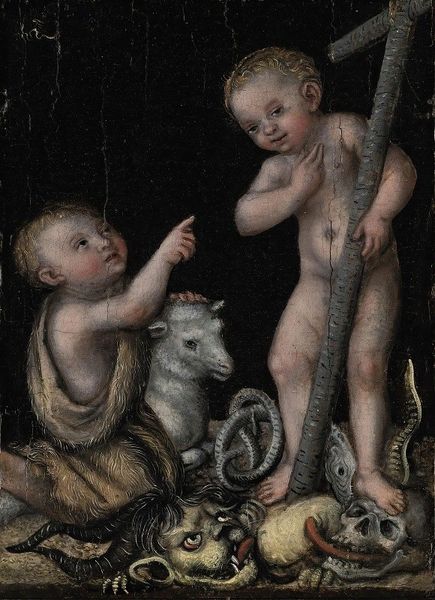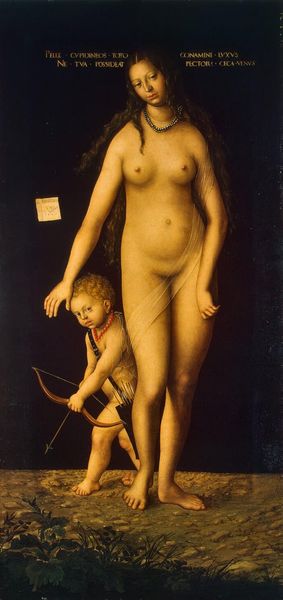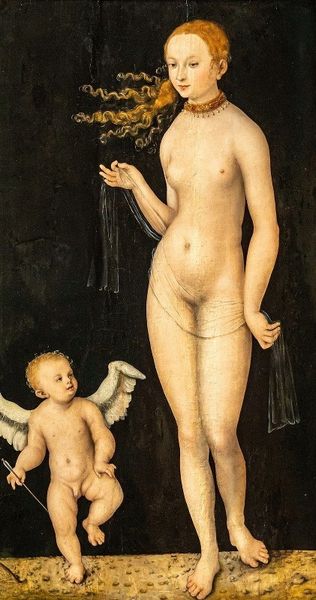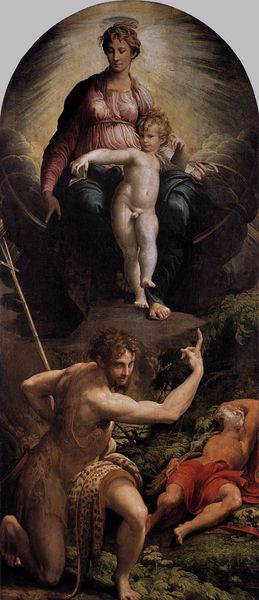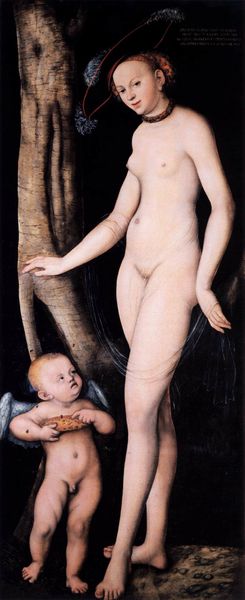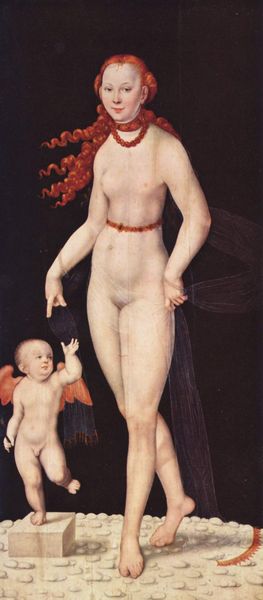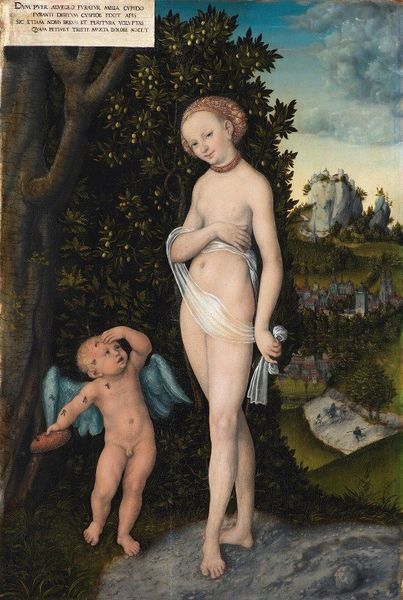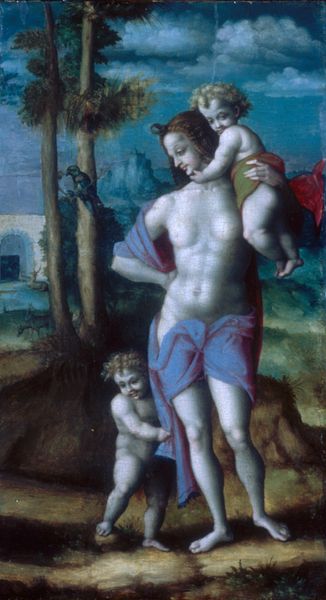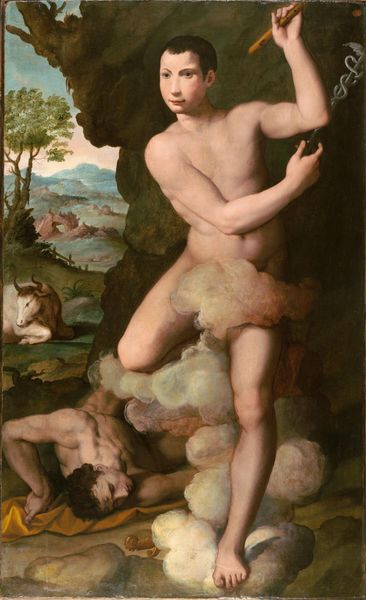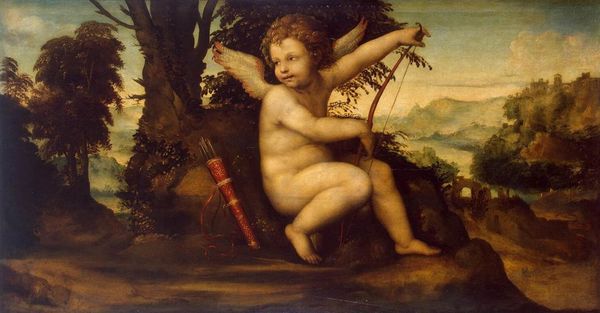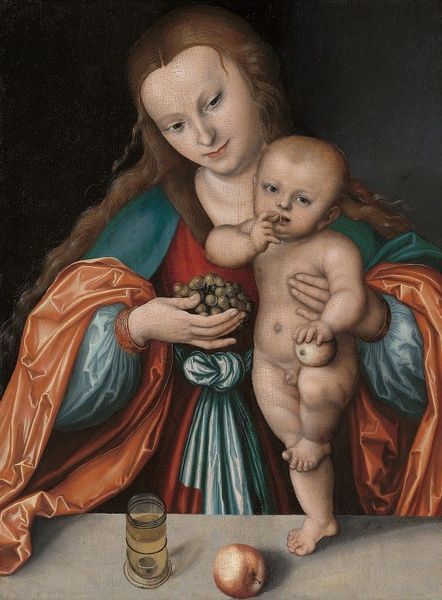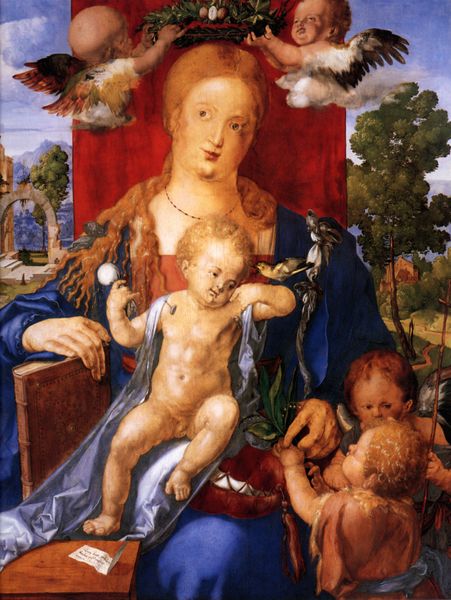
painting, oil-paint
#
portrait
#
allegory
#
narrative-art
#
painting
#
oil-paint
#
figuration
#
animal portrait
#
history-painting
#
northern-renaissance
Copyright: Public Domain: Artvee
Curator: Wow. I am struck, initially, by the almost cartoonish... roundness of everything. Like, baby cherubs let loose in a bouncy castle. It has this sweetness that's undercut by, well, a huge helping of dread. Editor: We are looking at “Adoration of the Child Jesus by St. John the Baptist” painted sometime between 1530 and 1540 by Lucas Cranach the Elder. It's an oil painting with a fascinating composition, typical of the Northern Renaissance. It also doesn’t quite fit, defying that stylistic label somehow. Curator: Exactly. And it’s Cranach, right? Which adds a whole other layer. He’s a fascinating one, caught between the religious upheaval and the changing styles… He even painted portraits of the reformers. Editor: Right, he was deeply involved with the Reformation, and you see that in his allegorical paintings especially. Here, look at how the infant Christ stands triumphant, his feet planted firmly on a skull and snakes… quite a statement about overcoming sin and death. The symbols are overt. Curator: Totally, it's so blatantly symbolic, that almost makes me... uncomfortable? Because it's not subtle, and yet there is something unsettling under the surface, for all that. I mean the slightly dopey looking lamb is touching. Also that death-serpent is really really beautifully painted in such minute and naturalistic detail that its so... appealing! Editor: The lamb is a traditional symbol of Christ, innocent and sacrificial. What gets me is the gaze of young John. He's not looking directly at Christ, but seems to be pointing *beyond*, to a future salvation maybe, a path to something *other*. It makes him the crucial interpreter of the whole scene. It shows the passing of the message from the prophet. Curator: Ah! Yes! The body language gives this narrative charge - like a play almost, or tarot cards perhaps: the child, the lamb, the skull. Like someone just dealt the hand. Is there also something creepy about infantilising these huge historical and important personages?! Is it meant to domesticate their importance for ordinary simple folk or is something more odd going on? Editor: Well, infantalizing figures in religious art was relatively common as that can be seen across art-historical depictions of the Madonna and child; maybe the creepiness that you mentioned could be a more contemporary projection! For Cranach, it might have been to emphasise purity and innocence, vital qualities in his religious worldview. Curator: And with that skull and lamb duality, the overall symbolism, it reminds you we have a *choice*. Maybe Cranach wanted the common person to confront such loaded imagery without even realizing that is exactly what's happening. Clever sod. Editor: Perhaps... it leaves you wondering, doesn't it? Almost five centuries on, the artwork's complexity still provides different perspectives, much like the Reformation era that shaped it. Curator: So here’s to the slippery nature of paintings then.
Comments
No comments
Be the first to comment and join the conversation on the ultimate creative platform.
